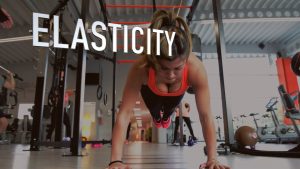
Functional fitness, a term that has gained significant traction in the fitness world, revolves around the idea of preparing the body for real-life movements and activities. Unlike traditional workouts that isolate specific muscle groups, functional fitness aims to enhance overall strength, balance, flexibility, and endurance, mirroring the movements and demands of daily life.
1. Everyday Movements as Exercise:
Functional fitness centers around exercises that mimic daily activities, such as bending, lifting, pushing, and pulling. Squats, for instance, replicate the motion of sitting and standing, while lunges imitate movements like climbing stairs. By incorporating these functional movements into workout routines, individuals can improve their ability to perform everyday tasks with ease, reducing the risk of injuries and enhancing overall mobility.
2. Core Strengthening:
A key focus of functional fitness is on strengthening the core muscles, which include the abdomen, lower back, and pelvis. These muscles provide stability and support for the entire body, playing a vital role in maintaining proper posture and preventing back pain. Core-strengthening exercises like planks, bridges, and rotational movements are fundamental components of functional fitness routines.
3. Balance and Stability:
Functional fitness exercises often involve unstable surfaces, such as balance balls or BOSU trainers. Working out on these unstable platforms challenges the body’s balance and stability, engaging deeper muscle groups. Improved balance not only reduces the risk of falls and injuries, especially in older adults, but also enhances athletic performance and overall coordination.
4. Prevention of Injuries:
Functional fitness focuses on strengthening muscles and joints in various angles and positions, leading to better joint stability and flexibility. This comprehensive approach helps prevent injuries by preparing the body to handle a wide range of movements and stresses. Stronger muscles and joints act as natural shock absorbers, reducing the impact on bones and cartilage during physical activities.
5. Customization and Accessibility:
One of the notable advantages of functional fitness is its adaptability to different fitness levels and physical abilities. Exercises can be modified to match individual capabilities, making it accessible to people of all ages and fitness backgrounds. Whether someone is recovering from an injury or a seasoned athlete looking to enhance performance, functional fitness can be tailored to meet specific needs and goals.
6. Mental Well-being:
The holistic approach of functional fitness, addressing both physical and mental aspects, contributes significantly to mental well-being. Engaging in functional exercises fosters a sense of accomplishment and boosts self-confidence. Moreover, the focus on mindful movements and body awareness enhances the mind-body connection, promoting relaxation and stress reduction.
In summary, functional fitness represents a paradigm shift in the way we approach physical activity. By emphasizing real-world movements, core strength, balance, and injury prevention, functional fitness not only enhances overall physical health but also improves the quality of everyday life. Its versatility and inclusivity make it a powerful tool for individuals seeking sustainable, long-term fitness solutions tailored to their unique needs and goals.





